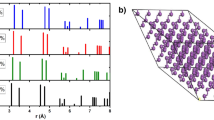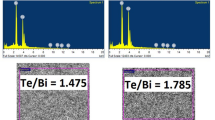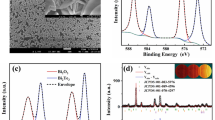Abstract
IN the course of work on vacuum bolometers, it has been noticed that films of bismuth evaporated on to a backing film of celluloid (both with thickness of the order of 1 micron) possessed a negative resistance-temperature coefficient. In order further to study the property, films of bismuth were evaporated on to microscope slides, washed and wiped but not otherwise cleaned. In every case these showed a negative resistance-temperature coefficient, which diminished with increasing thickness of film.
This is a preview of subscription content, access via your institution
Access options
Subscribe to this journal
Receive 51 print issues and online access
$199.00 per year
only $3.90 per issue
Buy this article
- Purchase on SpringerLink
- Instant access to full article PDF
Prices may be subject to local taxes which are calculated during checkout
Similar content being viewed by others
References
Baker, E. B., and Robb, C. D., Rev. Sci. Inst., 14, 356 (1943).
Amdur, I., and Glick, C. F., Rev. Sci. Inst., 16, 117 (1945).
Author information
Authors and Affiliations
Rights and permissions
About this article
Cite this article
TULLEY, T. Negative Resistance-Temperature Coefficient of Thin Evaporated Films of Bismuth. Nature 157, 372 (1946). https://doi.org/10.1038/157372a0
Issue date:
DOI: https://doi.org/10.1038/157372a0



